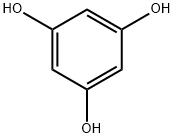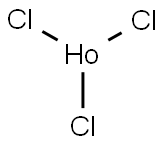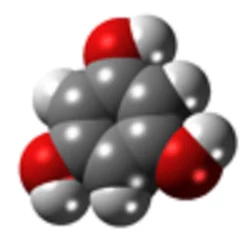Phloroglucinol
Synonym(s):1,3,5-Trihydroxybenzene;Phloroglucinol
- CAS NO.:108-73-6
- Empirical Formula: C6H6O3
- Molecular Weight: 126.11
- MDL number: MFCD00002286
- EINECS: 203-611-2
- SAFETY DATA SHEET (SDS)
- Update Date: 2025-12-17 09:49:18

What is Phloroglucinol?
Description
Phloroglucinol is a naturally occurring phenol that exhibits diverse biological activities. Phloroglucinol protects V79-4 Chinese hamster lung fibroblast cells from oxidative stress and inhibits lipid peroxidation by scavenging reactive oxygen species (ROS). It induces apoptosis in HT-29 human colon cancer cells and inhibits metastasis of BT549 and MDA-MB-231 human breast cancer cells. Phloroglucinol protects primary neurons from β-amyloid-induced dendritic spine loss in vitro and shortens the latency to find the platform in a Morris water maze test in an Alzheimer’s disease (AD) mouse model. Phloroglucinol has been used to stain histological plant sections and in the synthesis of numerous natural products. Phloroglucinol slows the frequency and decreases the amplitude of contraction in isolated rabbit and rat intestine at a concentration of 100 and 1 μM, respectively. Formulations containing phloroglucinol have been used as antispasmodics.
Chemical properties
white to light yellow crystal
Physical properties
Phloroglucinol crystallizes in the anhydrous form or as the dihydrate. Recrystallization from water gives the dihydrate, which is colorless, oderless, sweet in taste, and forms rhombic crystals. The dihydrate is converted into the anhydrous form by heating at 110 ℃. Phloroglucinol sublimes at higher temperatures with partial decomposition.
The Uses of Phloroglucinol
Phloroglucinol is mainly used as a coupling agent in printing. It is an active component of Tollen's reagent and Gunzburg reagent used to test pentoses and hydrochloric acid in gastric juice respectively. In analytical chemistry, it is used to study condensed tannins by means of depolymerization. It is also involved in the synthesis of 2,4,6-triamino-1,3,5- trinitrobenzene, trinitrophloroglucinol and pharmaceuticals like flopropione.
The Uses of Phloroglucinol
Phloroglucinol (1,3,5-trihydroxybenzene) is the core structure of a large family of substituted phenolics with broad, albeit weak, biological activity. Phloroglucinol is a useful metabolite for HPLC/DAD and bioassay dereplication.diagnostic aid growth hormone releasing factor. Antispasmodic.
What are the applications of Application
Phloroglucinol is a potentially useful hygroscopic biochemical
Definition
ChEBI: Phloroglucinol is a benzenetriol with hydroxy groups at position 1, 3 and 5. It has a role as an algal metabolite.
What are the applications of Application
Phloroglucinol (phlo) is a phenol derivative that shows cyctoprotective effect from oxidative damage by enhancing the activity of cellular catalase.
It can react with benzaldehyde derivatives to form phloroglucinol-based microporous polymeric organic frameworks (phlo-POF) with potential applications in ion-exchange and gas adsorption.
Phlo can also be used to prepare synthetic analogs of A-type proanthocyanidins (PACs) such as 2,8-dioxabicyclo[3.3.1]nonane derivatives by reacting with the corresponding flavylium salts.
General Description
Phloroglucinol is a trihydroxybenzene with antithrombotic, profibrinolytic, antimicrobial, antimalarial, cancer chemopreventive, anti-HIV and anti-leishmanial activities. Phloroglucinol (PG) is a biosynthetic precursor of the 2,4-diacetylphloroglucinol (DAPG) an antibiotic against soil-borne diseases. Phloroglucinol is a useful intermediate because it is polyfunctional.
Flammability and Explosibility
Not classified
Safety Profile
Moderately toxic by subcutaneous and intraperitoneal routes. Mildly toxic by ingestion. Experimental reproductive effects. Mutation data reported. When heated to decomposition it emits acrid smoke and irritating fumes. Used in diazo-type printing and textile dyeing, in microscopy as a bone specimen decalcifier
Purification Methods
Crystallise the triol from water, and store it in the dark under nitrogen. [Beilstein 6 IV 7361.]
Properties of Phloroglucinol
| Melting point: | 215-220 °C |
| Boiling point: | 194.21°C (rough estimate) |
| Density | 0.801 g/mL at 20 °C |
| vapor pressure | 0.001Pa at 25℃ |
| refractive index | n |
| Flash point: | 14 °C |
| storage temp. | Store below +30°C. |
| solubility | Soluble in diethyl ether, ethanol and pyridine. |
| form | Crystalline Powder |
| pka | pK1:8.45(0);pK2:8.88(-1) (25°C) |
| color | White to light beige |
| Water Solubility | 11.17g/L(room temperature) |
| Sensitive | Light Sensitive & Hygroscopic |
| Merck | 14,7328 |
| BRN | 1341907 |
| CAS DataBase Reference | 108-73-6(CAS DataBase Reference) |
| NIST Chemistry Reference | 1,3,5-Benzenetriol(108-73-6) |
| EPA Substance Registry System | 1,3,5-Benzenetriol (108-73-6) |
Safety information for Phloroglucinol
| Signal word | Warning |
| Pictogram(s) |
 Exclamation Mark Irritant GHS07 |
| GHS Hazard Statements |
H315:Skin corrosion/irritation H317:Sensitisation, Skin H319:Serious eye damage/eye irritation H335:Specific target organ toxicity, single exposure;Respiratory tract irritation |
| Precautionary Statement Codes |
P261:Avoid breathing dust/fume/gas/mist/vapours/spray. P264:Wash hands thoroughly after handling. P264:Wash skin thouroughly after handling. P271:Use only outdoors or in a well-ventilated area. P280:Wear protective gloves/protective clothing/eye protection/face protection. P302+P352:IF ON SKIN: wash with plenty of soap and water. P305+P351+P338:IF IN EYES: Rinse cautiously with water for several minutes. Remove contact lenses, if present and easy to do. Continuerinsing. |
Computed Descriptors for Phloroglucinol
| InChIKey | QCDYQQDYXPDABM-UHFFFAOYSA-N |
Phloroglucinol manufacturer
JSK Chemicals
New Products
4,4-Difluoropiperidine hydrochloride tert-butyl 9-methoxy-3-azaspiro[5.5]undecane-3-carboxylate Indole Methyl Resin N-Isopropylurea N,N-Dicyclohexylcarbodiimide(DCC) MELDRUMS ACID 5-METHYLISOXAZOLE-4-CARBOXYLIC ACID Magnessium Bis glycinate Zinc ascorbate 1-bromo-2-butyne 2-acetamidophenol 9(10H)-anthracenone Erythrosin B, 4-Piperidinopiperidine 2-((4-morpholinophenylamino) (methylthio) methylene) malononitrile 2,4-dihydroxybenzaldehyde 3-(4-morpholinophenylamino)-5-amino-1H-pyrazole-4-carbonitrile Methyl 2-methylquinoline-6-carboxylate 2,6-dichloro-4-nitropyridine 4-Bromo-2-chlorobenzonitrile 2-(benzylamino)acetic acid hydrochloride 4-(tert-Butoxycarbonylamino)but- 2-ynoic acid 3,4-dihydro-2H-benzo[b][1,4]dioxepine 1-Phenyl-1-cycloprppanecarboxylicacidRelated products of tetrahydrofuran








You may like
-
 Phloroglucinol 97% CAS 108-73-6View Details
Phloroglucinol 97% CAS 108-73-6View Details
108-73-6 -
 Phloroglucinol Anhydrous extrapure AR CAS 108-73-6View Details
Phloroglucinol Anhydrous extrapure AR CAS 108-73-6View Details
108-73-6 -
 Phloroglucinol CASView Details
Phloroglucinol CASView Details -
 Phloroglucinol CASView Details
Phloroglucinol CASView Details -
 PHLOROGLUCINOL 99 %View Details
PHLOROGLUCINOL 99 %View Details
108-73-6 -
 PhloroglucinolView Details
PhloroglucinolView Details
108-73-6 -
 PhloroglucinolView Details
PhloroglucinolView Details
108-73-6 -
 PhloroglucinolView Details
PhloroglucinolView Details
108-73-6
